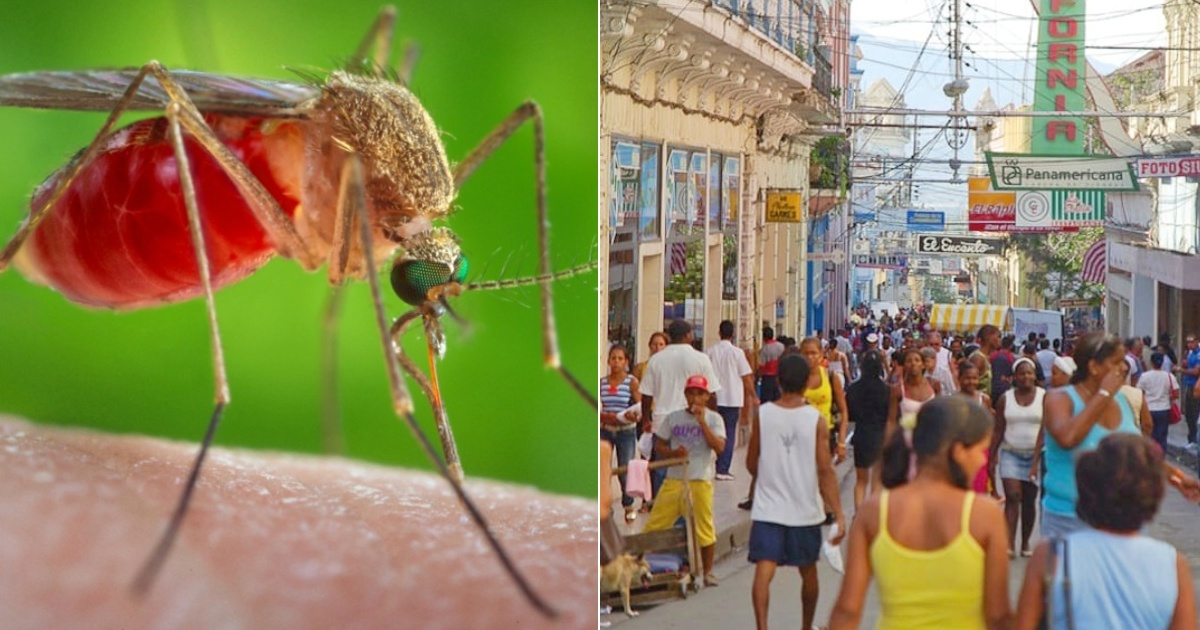
The Ministry of Public Health (MINSAP) of Cuba confirmed this Monday the presence in the province of Santiago de Cuba of cases of Oropouche fever, a viral disease transmitted by mosquitoes and flies.
The official note released by the MINSAP indicated that following "follow-up actions and surveillance of non-specific febrile syndromes in the province of Santiago de Cuba, the presence of the Oropouche virus was identified in two Health areas of the municipalities of Santiago de Cuba (Ernesto Guevara) and Songo La Maya (Carlos J. Finlay), based on samples analyzed in the national reference laboratory of the Pedro Kourí Institute (IPK)."
The Ministry of Health says that "all cases have evolved favorably with improvement of symptoms between the third and fourth day from the onset of the illness."
The official source added that the clinical picture that manifests as a result of the disease is "mild, preceded by an incubation period of 5 to 7 days, characterized by fever, headaches, muscle and joint pains, and sometimes vomiting and diarrhea are also reported."
The note says that no severe, critical, or fatal cases associated with the virus have been reported, and that "there is no specific treatment," only general measures to relieve symptoms.
The top Cuban health entity assured - although without providing details - that "entomo-epidemiological actions are being carried out to break the transmission chain and achieve control of the disease in the shortest possible time."
Doctor Francisco Durán García, National Director of Epidemiology of MINSAP, will appear in minutes on the Midday newscast to explain issues related to the Oropouche virus, identified in two health areas of Santiago de Cuba (the town of Boniato and Songo la Maya) and recently in several communities in Cienfuegos. It is a mild virus, transmitted by a type of midge, whose symptoms last for a period of 4 to 7 days. No severe cases or deaths have been reported in the region or in Cuba.
The Oropouche virus is mainly transmitted to humans through the bite of the Culicoides paraensis midge, which is present in the Americas region. However, it can also be transmitted by the Culex quinquefasciatus mosquito.
According to information released on May 23 by the official website Infomed, in the last month cases of Oropouche fever have been detected in areas outside the Amazon region of Brazil.
For this reason, "in addition to the high circulation of dengue reported in several countries and territories of the Region of the Americas," the Pan American Health Organization (PAHO) and the World Health Organization (WHO) urged Member States to follow the recommendations for the differential diagnosis of Oropouche virus (OROV) and to strengthen entomological surveillance measures, vector control, and personal protection for the population at higher risk.
What does the Pan American Health Organization say about Oropouche fever?
The PAHO indicates that after an incubation period of 5 to 7 days, patients experience high fever, headache with photophobia, myalgia, arthralgia, and, in some cases, rashes. In certain patients, symptoms may include vomiting and bleeding, manifesting as petechiae, epistaxis, and gingival bleeding. Generally, the infection resolves within a period of 2 to 3 weeks.
Although MINSAP did not provide details, PAHO warns that "in exceptional situations, OROV can cause meningitis or encephalitis."
In these cases, patients show neurological symptoms and signs such as dizziness, lethargy, nystagmus, and neck stiffness. The virus can be detected in the cerebrospinal fluid (CSF).
Currently, there are no vaccines or specific antiviral medications available to prevent or treat OROV infection.
The focus of the treatment is palliative, meaning it is centered on relieving pain, rehydrating the patient, and controlling any vomiting that may occur. In situations where the disease presents itself in a neuroinvasive form, it will be necessary to admit the patient to specialized units that allow for constant monitoring.
Identification of cases in Santiago de Cuba
This weekend, the Ministry of Public Health was unable to identify the new virus affecting the population of Santiago de Cuba, although they admitted that the first cases were being analyzed at the Pedro Kourí Institute of Tropical Medicine.
During an appearance on Provincial Television, Dr. Luis E. Rondón, head of pediatrics in Santiago de Cuba, urged parents not to leave children with symptoms at home and to seek medical assistance, especially in the case of infants younger than one year old.
He pointed out that some cases so far have required hospitalization following medical protocols, but no loss of human lives has been reported.
Dr. Tania Carbonell, deputy director of Health at Saturnino Lora Hospital in Santiago, emphasized that no serious cases have been reported. However, she warned about warning signs in this disease that include persistent fever, intense pain, bleeding, vomiting, and alterations in mental status.
The doctor also warned about the importance of not using aspirin or anti-inflammatory medications, as they could promote bleeding processes.
What do you think?
SEE COMMENTS (4)Filed under: